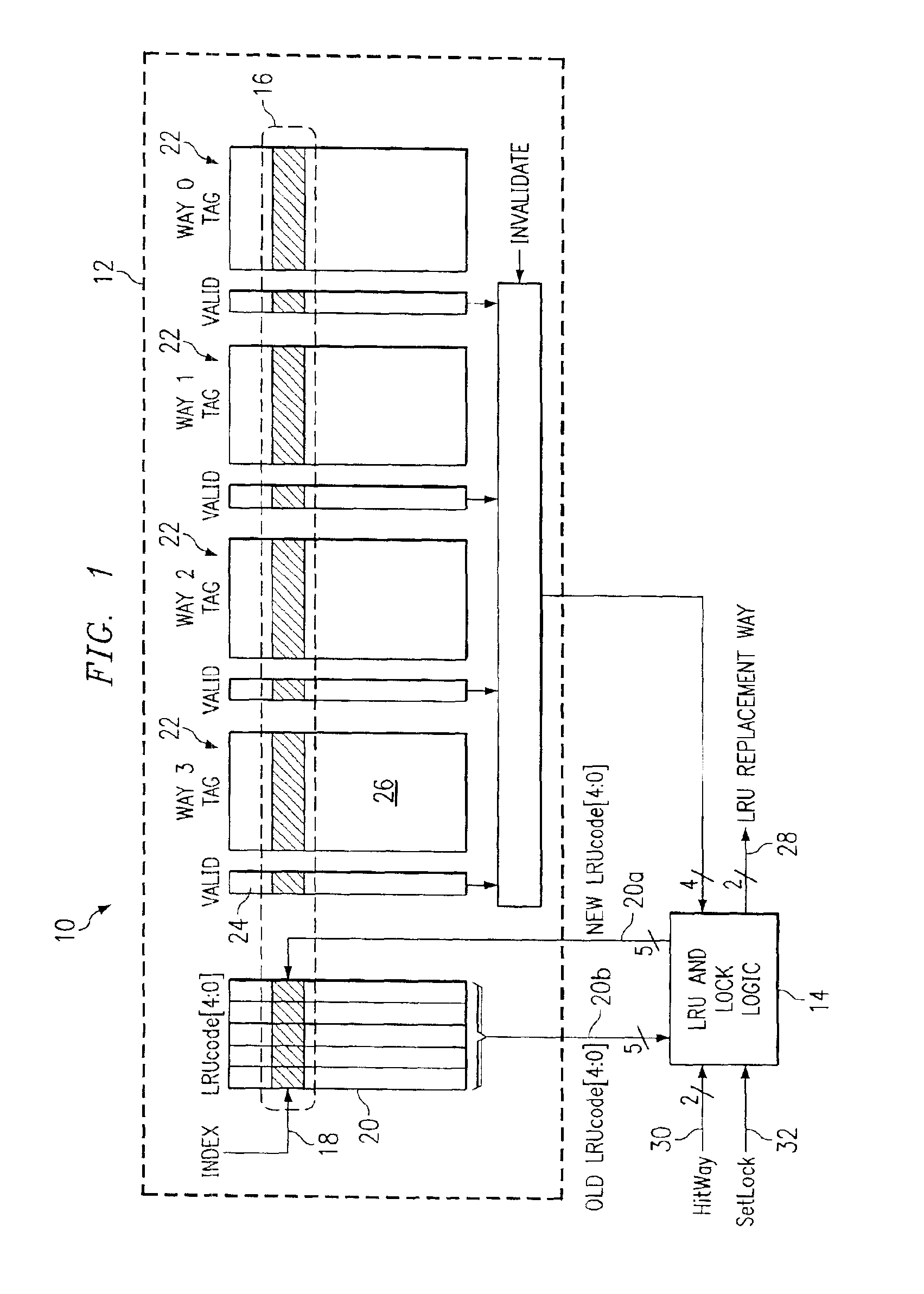Cache memory for identifying locked and least recently used storage locations
a storage location and cache memory technology, applied in the field of cache memory for identifying locked and least recently used storage locations, can solve the problems of limiting the amount of control information that may be carried therein, and the cost of a lock bit can be significant, so as to eliminate the recording of usage information and save memory.
- Summary
- Abstract
- Description
- Claims
- Application Information
AI Technical Summary
Benefits of technology
Problems solved by technology
Method used
Image
Examples
Embodiment Construction
[0011]FIG. 1 is a block diagram of a cache memory 10. For purposes of illustration, cache memory 10 will be discussed as a four way set associative though the present invention may be applicable to any number of ways for a set associative cache. Cache memory 10 includes a memory unit 12 and a logic block 14. Memory unit 12 is divided into a number of storage locations or sets 16 with each set accessed by an index 18. Each set has a priority lock code 20 in a code memory block and four data memory blocks or ways 22 associated therewith. Priority lock code 20 determines which way 22 associated with index 18 has been most recently used (MRU), least recently used (LRU), next most recently used (MRU-1), and next least recently used (LRU-1). Priority lock code 20 also determines which way 22 is in a locked state. When a way 22 is locked, its set information cannot be replaced until the set information is invalidated. Each way 22 includes a valid bit 24 and tag information 26 for each set ...
PUM
 Login to View More
Login to View More Abstract
Description
Claims
Application Information
 Login to View More
Login to View More - R&D
- Intellectual Property
- Life Sciences
- Materials
- Tech Scout
- Unparalleled Data Quality
- Higher Quality Content
- 60% Fewer Hallucinations
Browse by: Latest US Patents, China's latest patents, Technical Efficacy Thesaurus, Application Domain, Technology Topic, Popular Technical Reports.
© 2025 PatSnap. All rights reserved.Legal|Privacy policy|Modern Slavery Act Transparency Statement|Sitemap|About US| Contact US: help@patsnap.com



